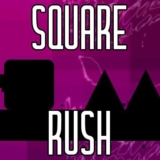Introduction and How to Play the Game “Is It Right?”
Is It Right? is a fun, engaging, and thought-provoking puzzle game that tests players’ ability to make quick decisions based on a series of logical or perceptual questions. The game challenges players to evaluate different scenarios, make judgments, and decide whether the statements or situations presented are “right” or “wrong.” It’s a great game for improving critical thinking, decision-making skills, and attention to detail.
This guide will walk you through the mechanics of the game, provide tips for playing, and explain how you can master its challenges while having fun.
1. What is “Is It Right?”
Is It Right? is a decision-making and logic-based game where players are presented with various situations, facts, or statements. The goal is to determine whether the scenario or statement is correct (right) or incorrect (wrong). The challenge is often about thinking quickly, understanding patterns, and recognizing whether the presented information makes sense or not.
The game typically involves multiple rounds with varying levels of difficulty. As players progress through levels, the scenarios become more complex, requiring deeper thinking or faster decision-making. This makes Is It Right? a dynamic and engaging game for players who enjoy mental challenges.
2. Gameplay Mechanics
The mechanics of Is It Right? are straightforward, but the real challenge lies in processing information quickly and accurately. Here’s how it works:
- Statements or Scenarios: Each level presents you with a statement or scenario. This could be a factual statement, a logical problem, or a visual puzzle.
- Making the Right Decision: After reading or analyzing the statement, you will need to decide whether it is “right” (correct) or “wrong” (incorrect). You do this by selecting one of two options—usually represented as “Yes” or “No,” or “Right” and “Wrong.”
- Time Limit: In some versions of the game, you may be given a time limit to answer. This adds an element of pressure, requiring you to think quickly.
- Feedback: After you make a choice, the game will tell you if your decision was correct or not. This feedback helps you understand whether your reasoning was accurate.
- Levels and Difficulty: The game progresses through levels, each presenting a new set of scenarios. The difficulty increases as the game advances, with more complicated statements or visual puzzles that require more critical thinking.
- Score System: Many versions of Is It Right? include a scoring system based on how quickly and accurately you answer. Points may be awarded for correct answers, and bonus points may be given for completing the level under a certain time limit.
3. How to Play “Is It Right?”: Step-by-Step Guide
Here is a step-by-step guide to help you get started and play Is It Right?:
Step 1: Start the Game
Upon launching Is It Right?, you’ll be presented with the main screen, where you can start a new game or continue from where you left off. Choose “Start” or “Play” to begin.
Step 2: Understand the Scenario
Each level starts with a scenario or statement. It could be anything from a factual statement about the world, a simple math problem, or a more abstract statement that requires logical reasoning. Take a moment to read the statement carefully before making your decision.
Step 3: Decide Whether the Statement is “Right” or “Wrong”
Once you’ve read the statement or scenario, you will have to determine whether it is correct or not. The game will offer you two options—typically “Right” or “Wrong”—and you need to tap or click on the one that best fits the scenario based on your knowledge or judgment.
Step 4: Answer Quickly
In many versions of Is It Right?, there is a time limit to your answers. Try to answer as quickly as possible, but make sure you understand the scenario before making your choice. Speed is important, but accuracy is key!
Step 5: Review Feedback
After selecting your answer, the game will give you feedback. If your answer is correct, you’ll earn points and move on to the next question. If it’s incorrect, the game will typically explain why, so you can learn from your mistake.
Step 6: Advance Through Levels
As you continue answering questions correctly, you will progress through the levels. The game may get progressively harder, with more difficult statements, tricky scenarios, or additional time pressure. Continue making the right decisions and try to achieve the highest score possible.
4. Tips and Strategies for Playing “Is It Right?”
While Is It Right? may seem simple at first, it can become quite challenging as you move through the levels. Here are some tips and strategies to help you succeed:
- Read Carefully: Before making a decision, always take a moment to read the statement or scenario carefully. The game often presents tricky questions where a small detail can change the answer. Make sure to focus on the wording.
- Don’t Rush, but Stay Quick: Speed is important, but accuracy should always come first. Make sure you understand the question before answering, especially when there’s a time limit. Rushed decisions can lead to mistakes, so balance speed with thoughtfulness.
- Use Logical Reasoning: Many questions require logical thinking. If the scenario seems ambiguous, try to break it down logically. For example, if it’s a math problem, use basic principles to figure out whether the statement is true or false.
- Stay Calm Under Pressure: Some levels may have tight time limits, which can make you feel rushed. Try to stay calm and think before answering. Panicking can cloud your judgment and lead to wrong answers.
- Learn from Mistakes: If you answer a question incorrectly, pay attention to the feedback and learn from it. Understanding why an answer is wrong will help you make better decisions in future levels.
- Keep Practicing: As with any puzzle or decision-making game, practice makes perfect. The more you play, the better you will become at analyzing scenarios quickly and accurately. Over time, you’ll develop an instinct for making the right choices.
5. How to Master the Game and Improve Your Score
To master Is It Right? and consistently improve your score, consider the following strategies:
- Think in Categories: Try to categorize the types of questions you face. Some scenarios may require knowledge of facts (e.g., history or geography), while others may involve logical puzzles. Grouping them in your mind will help you think faster during the game.
- Focus on Key Words: In tricky statements, focus on key words that can indicate whether something is true or false. For example, words like “always,” “never,” or “only” can change the context of a statement, so pay attention to them.
- Challenge Yourself: As the game progresses, challenge yourself by aiming for higher scores or attempting to complete the levels in record time. Don’t be afraid to replay levels to improve your performance.
- Review Mistakes: After completing a level, review the mistakes you made and think about why you got an answer wrong. This reflection will improve your judgment in future levels.
6. Conclusion
Is It Right? is a simple yet addictive game that encourages players to think critically and make fast decisions. Whether you’re solving mathematical problems, evaluating logical scenarios, or recognizing visual cues, the game provides an engaging experience that sharpens your mind.
By following the steps outlined above, practicing regularly, and applying the strategies for quick and accurate decision-making, you can improve your performance and enjoy the challenge of each level. Whether you’re playing for fun or trying to achieve a high score, Is It Right? is sure to keep you entertained and mentally sharp.
So, give it a try, and start making the right decisions to master the game!







































